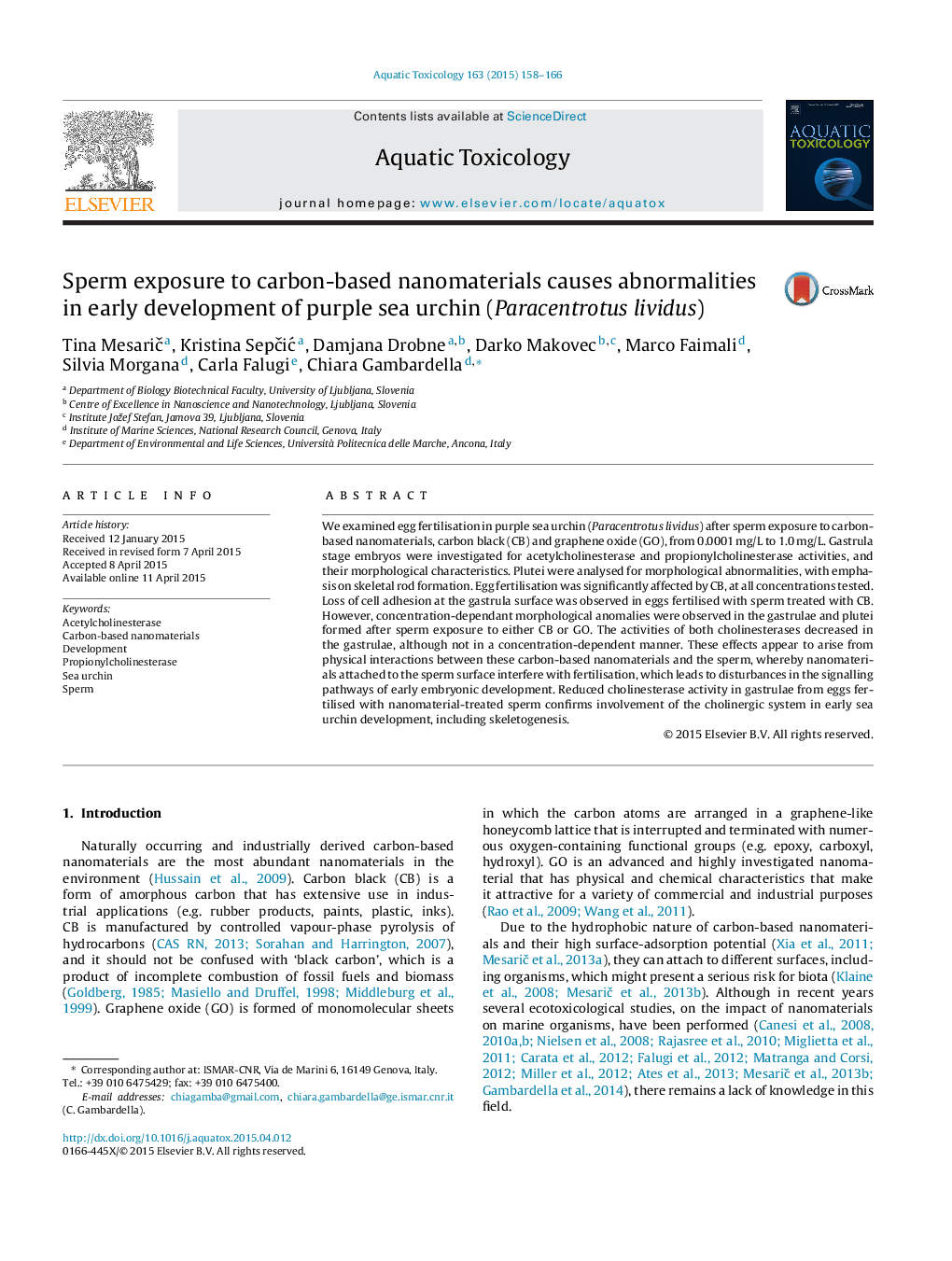| Article ID | Journal | Published Year | Pages | File Type |
|---|---|---|---|---|
| 4529052 | Aquatic Toxicology | 2015 | 9 Pages |
•CB exposure of P. lividus sperm reduces egg fertilisation already at 0.0001 mg/L.•GO exposure of P. lividus sperm does not affect egg fertilisation at up to 1 mg/L.•CB and GO exposure of sperm induce developmental anomalies in gastrulae and plutei.•CB and GO exposure of sperm reduce cholinesterase activities in gastrulae.
We examined egg fertilisation in purple sea urchin (Paracentrotus lividus) after sperm exposure to carbon-based nanomaterials, carbon black (CB) and graphene oxide (GO), from 0.0001 mg/L to 1.0 mg/L. Gastrula stage embryos were investigated for acetylcholinesterase and propionylcholinesterase activities, and their morphological characteristics. Plutei were analysed for morphological abnormalities, with emphasis on skeletal rod formation. Egg fertilisation was significantly affected by CB, at all concentrations tested. Loss of cell adhesion at the gastrula surface was observed in eggs fertilised with sperm treated with CB. However, concentration-dependant morphological anomalies were observed in the gastrulae and plutei formed after sperm exposure to either CB or GO. The activities of both cholinesterases decreased in the gastrulae, although not in a concentration-dependent manner. These effects appear to arise from physical interactions between these carbon-based nanomaterials and the sperm, whereby nanomaterials attached to the sperm surface interfere with fertilisation, which leads to disturbances in the signalling pathways of early embryonic development. Reduced cholinesterase activity in gastrulae from eggs fertilised with nanomaterial-treated sperm confirms involvement of the cholinergic system in early sea urchin development, including skeletogenesis.
